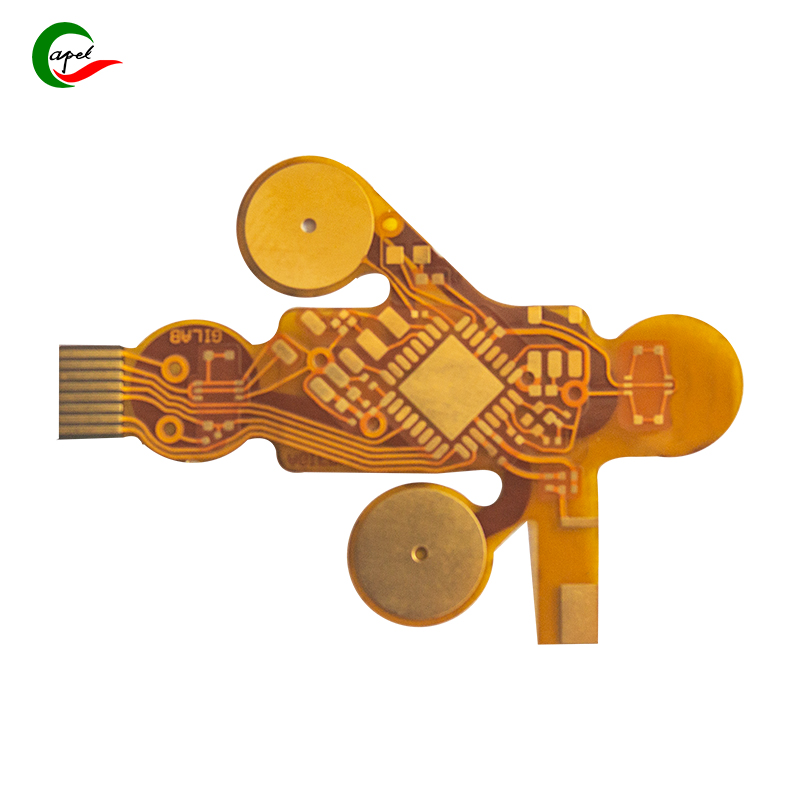When you design a flexible printed circuit (FPC), it’s easy to fixate on traces, bends, or component fit—but the material beneath it all is what truly determines if your FPC lasts 100 cycles or 10,000. Choose the wrong material, and even the best design will fail: your smartwatch FPC cracks, your outdoor sensor shorts out, or your medical device can’t handle sterilization.
Not all flexible circuit materials are the same. The right one matches your device’s needs—whether it’s bending 10 times a day, surviving -40°C winters, or staying safe in a hospital. Let’s break down the key materials, how to pick them, and why they matter more than you think.
Every FPC relies on three layers—each with a job to do. Pick the right combination, and your FPC works; pick the wrong one, and it’s a costly mistake:
-
Base Film (Substrate): The “backbone” of your FPC.
-
Polyimide (PI): The gold standard. It handles extreme temps (-40°C to 200°C), resists chemicals, and bends 10,000+ times without breaking. Perfect for foldables, wearables, or medical tools. A fitness brand switched from cheap plastic to PI—their FPC failure rate dropped by 70%.
-
Polyester (PET): Cheaper than PI, but less durable (max temp 120°C, 1,000–5,000 bends). Good for low-stress devices (e.g., simple remote controls) but risky for anything that bends often.
-
Copper Foil: Carries the signal and power.
-
Electrodeposited (ED) Copper: Thin (1oz–3oz) and flexible—great for tight bends (like in hearing aids).
-
Rolled Annealed (RA) Copper: Thicker, stronger, and better for high-current devices (e.g., battery chargers). It resists cracking under pressure.
-
Cover Layer/Coating: Protects the FPC.

Stop choosing materials based on price alone. Ask these 3 questions to get it right:
-
How often will the FPC bend? If it’s a foldable phone (bends 50+ times a day), PI + ED copper is non-negotiable. For a static device (e.g., a fixed sensor), PET might work.
-
What environment will it face? Outdoor/industrial use needs PI + conformal coating. Medical devices need materials that stand up to autoclaving (high heat/steam)—PI handles this; PET melts.
-
How much current will it carry? High-power devices (e.g., power banks) need RA copper (2oz+). Low-power sensors can use ED copper (1oz).
A startup once used PET for a foldable VR headset FPC—after 200 bends, 80% of the boards cracked. Switching to PI + ED copper fixed the issue entirely.
The biggest error? Using “one-size-fits-all” materials. A client once ordered PI FPCs for a simple remote control—they worked, but they paid 30% more than needed. PET would have been just fine.
Another mistake: skipping material certifications. If your device needs FDA approval (medical) or RoHS compliance (consumer electronics), make sure your materials meet those standards. A medical tool company had to redo 500 FPCs because their PET didn’t pass biocompatibility tests—PI would have qualified.
It’s tempting to cut costs with cheap materials, but it backfires. A smart home brand used low-grade PI for their outdoor sensors—6 months later, 40% failed due to moisture damage. Replacing them cost $20,000. Switching to high-quality PI + conformal coating dropped failures to 2%—saving them money in the long run.
Flexible printed circuit materials aren’t just “parts”—they’re the foundation of your FPC’s success. By understanding the core options, matching materials to your device’s needs, and avoiding quick-cost cuts, you’ll build FPCs that last, perform, and keep your projects on track.
Founded in 2009, our company has deep roots in the production of various circuit boards. We are dedicated to laying a solid electronic foundation and providing key support for the development of diverse industries.
Whether you are engaged in electronic manufacturing, smart device R&D, or any other field with circuit board needs, feel free to reach out to us via email at sales06@kbefpc.com. We look forward to addressing your inquiries, customizing solutions, and sincerely invite partners from all sectors to consult and collaborate, exploring new possibilities in the industry together.
